The 2023 Tour Down Under kicked off the WorldTour racing season last night with a prologue time trial.
Given the impractical logistics and cost implications of shipping dedicated time trial bikes halfway around the world for a single, 5.5km stage, the race organisers decided to make it a road bike-only affair.
As you might imagine, this led to some unusual tech choices.
From disc wheels on road bikes, to big aero helmets, narrow handlebars and aggressively turned-in brake levers, let’s take a look at some of the tricks riders used to go as fast as possible on a road bike.
Disc-brake disc wheels on road bikes and other time trial kit
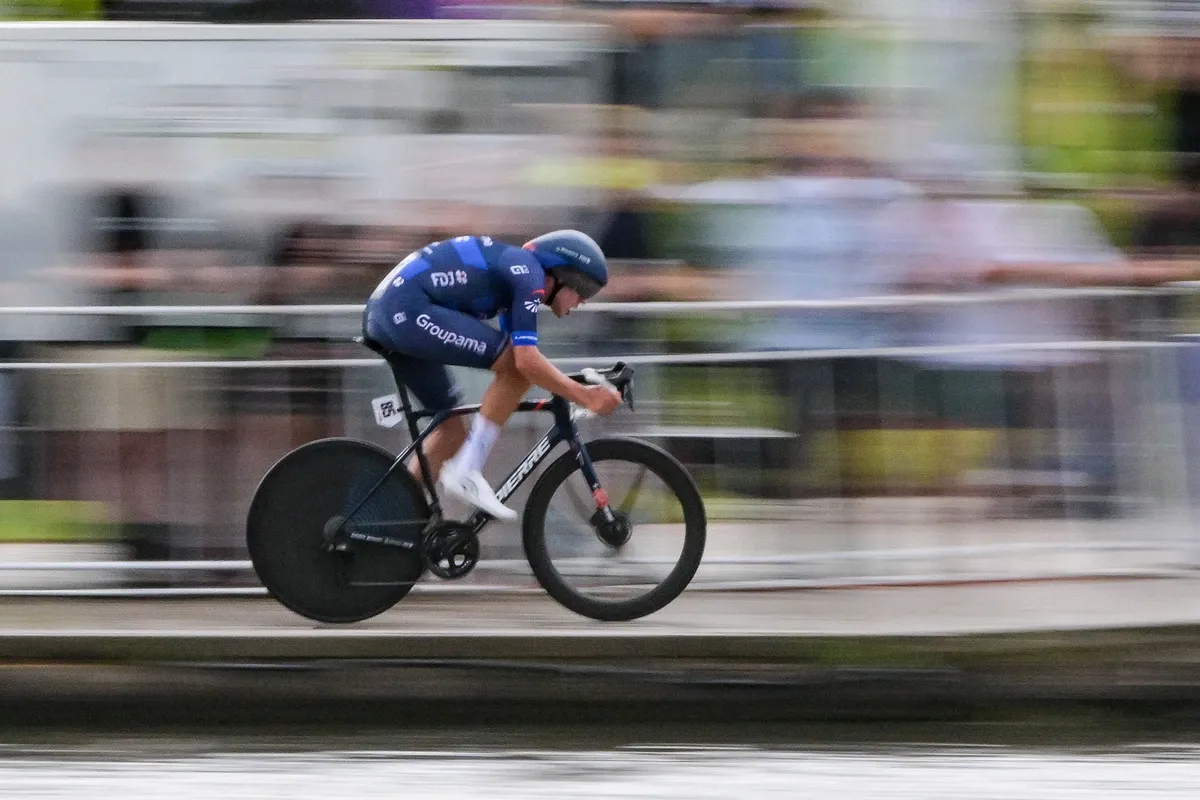
Though usually the reserve of time trial bikes, most riders used solid rear-disc wheels on their team-issue aero road bikes for this prologue.
With the parcours being essentially pan-flat, weight was evidently not a concern and most riders simply chose the most aerodynamic setup possible (within the constraints of what their teams were willing to send to Australia).
Many riders also ran time trial-specific front wheels.
Ethan Hayter, as well as a number of his Team Ineos Grenadiers teammates, used the Princeton Mach 7580 TS front wheel – a tri-spoke carbon wheel first spotted at the 2022 Tour de France on Filippo Ganna’s Pinarello Bolide F time trial bike.
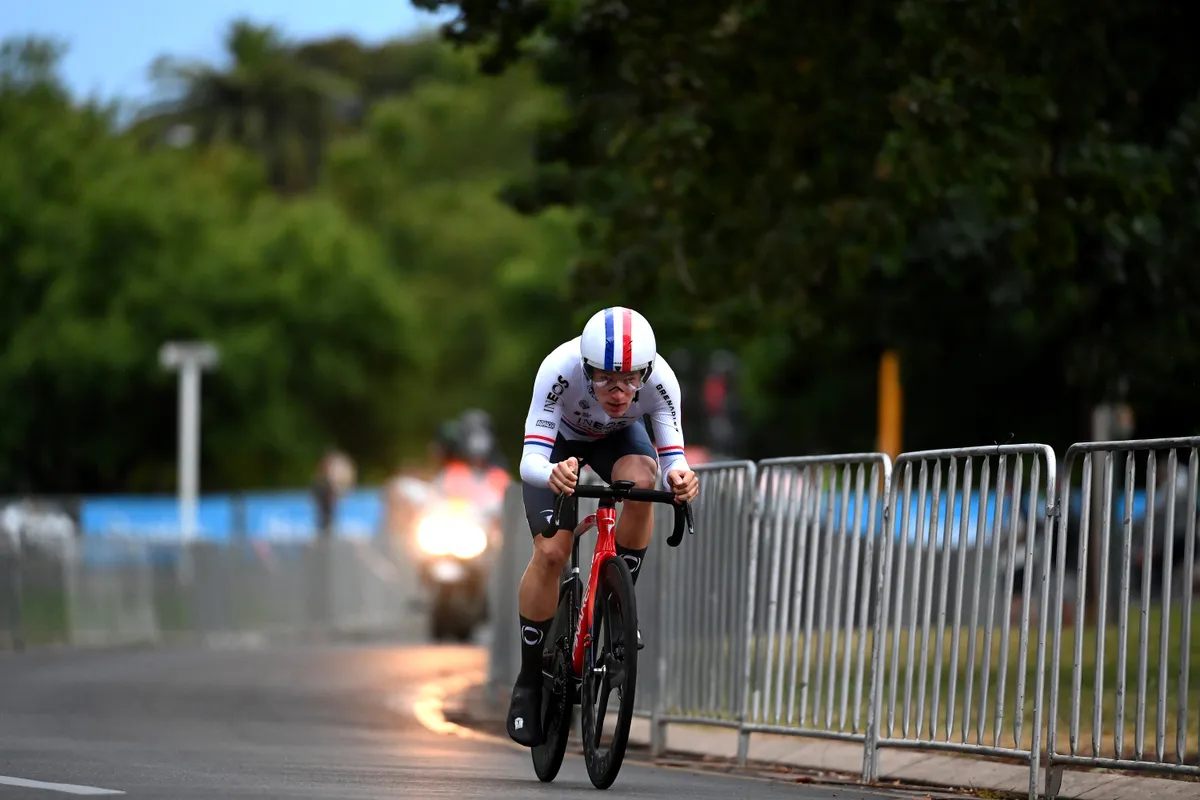
As expected, every rider we saw was wearing a skinsuit and most also wore aero socks or overshoes.
Surprisingly, though, not everyone opted for a time trial-specific helmet.

While the distinctively oversized Specialized S-Works TT5 was out in full force on the heads of Specialized-sponsored riders, some riders went with standard road helmets.

Marc Brustenga of Team Trek - Segafredo, for example, opted for an as-yet-unreleased Trek aero road helmet.

Fabio Felline, of Astana Qazaqstan Team, meanwhile, even opted for the heavily-vented Limar Airpro, instead of the brand’s more streamlined Air Atlas aero road helmet or Air King time trial helmet.
Perhaps Felline (who finished in 94th place, out of 139 starters) was simply more concerned with keeping a cool head, than ultimate speed. It can get very hot in the summer down under, after all.
Turned-in brake hoods
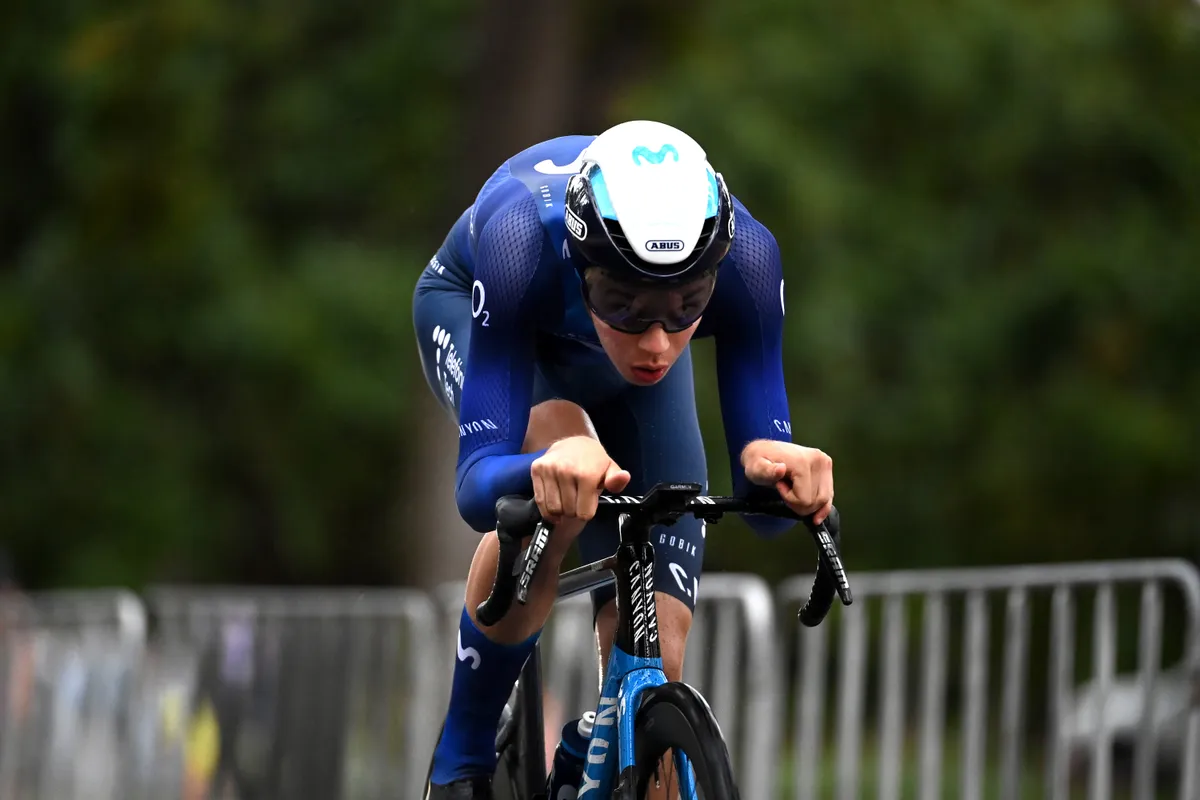
Anyone who has been following pro cycling in recent years will have noticed many riders now turn their shifters slightly inwards.
Riders do this in a bid to create a narrower – and, theoretically, more aerodynamic – position on an otherwise standard drop handlebar (it’s been shown that riding with your hands on the hoods and with horizontal forearms can be very aerodynamically efficient).
Current men’s UCI Road World Champion, Remco Evenepoel, is widely credited with kick-starting this craze.
Perhaps as a result of his success, it’s increasingly being adopted across the board, with some extreme examples on display in this prologue.
While the UCI recently introduced new rules limiting the minimum width of road bike handlebars to 350mm (when measured outside to outside), there are currently no regulations surrounding brake lever angle or specifying a minimum width between the two brake hoods.

Taking advantage of this loophole, Taco van der Hoorn’s Cube Litening C:68X TE has a UCI-legal 38cm handlebar, but the brake hoods are tilted inwards to offer an effective hand width of just 30cm.

Pello Bilbao, of team Team Bahrain Victorious, adopted the most extreme interpretation of this rule.
Using an already narrow handlebar, Bilbao’s Shimano Dura-Ace Di2 STI levers were tilted inwards as far as possible.
As we weren’t there to measure them, it’s impossible to know exactly how far apart Bilbao’s brake hoods were. But if van der Hoorn’s hoods are 30cm apart, we reckon Bilbao’s could be in the low 20s – sis hands are in such a narrow position they’re almost touching either side of his Garmin Edge bike computer.
How much difference did it make? It’s hard to tell. All else being equal, narrower does tend to equal faster.
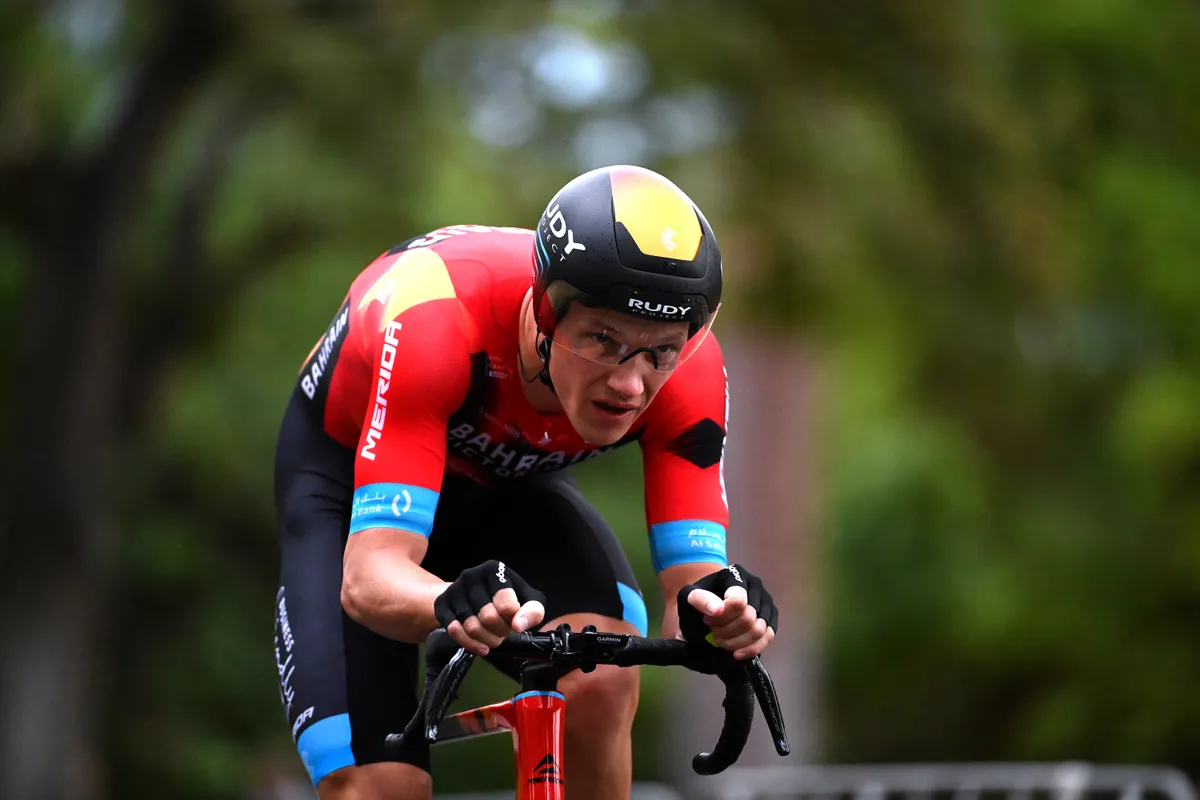
Bilbao, though, ultimately finished in 25th place, some 20 seconds behind stage winner Alberto Bettoil of EF Education-EasyPost.
Unfortunately, though, it appears prologue winner Alberto Bettiol went so fast that he eluded race photographers during the prologue.
Pictures of his bike from the Schwalbe Classic Men's Elite criterium on the weekend show Bettiol also has his brake hoods tilted in slightly, albeit on a more ‘normal’ width handlebar compared to Bilbao.
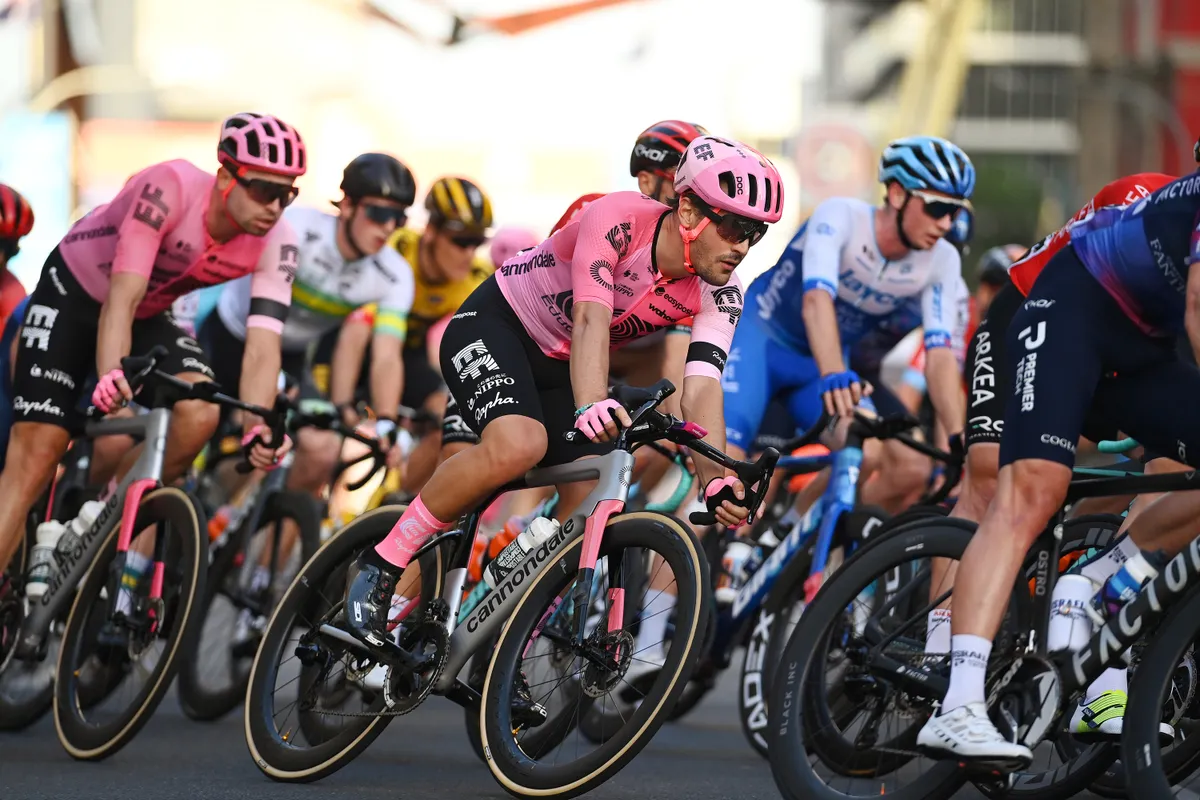
Illegal forearm support?
Notably, many of the riders adopting these extreme positions were also seen to be resting their forearms on the tops of their handlebars, while still holding the brake hoods.
The UCI rules on this subject are fairly explicit – technically, this shouldn’t be allowed on a road bike.
As per article 2.2.205 of the UCI’s regulations, “using the forearms as a point of support on the handlebar is prohibited except in time trials.”

But wait, you’re probably thinking – “this was a time trial, wasn’t it?”
Yes, it was. But also, maybe not…
If it was officially a time trial – and therefore forearm support was allowed – then surely riders would have been able to use clip-on aerobars to make their positions even more aerodynamic?
Considering no one did so, and the fact that the race organisers specifically banned TT bikes, it seems highly unlikely this would have been allowed.
But then, if this event was governed by road bike rules, then surely using your forearms as a point of support shouldn't be allowed either…

The likely answer is this rule exists as something of a grey area, or was subject to an on-site clarification by the commissaires before the prologue began.
We’ve previously seen riders disqualified for adopting the now-illegal ‘puppy paws’ position.
This position aims to mimic a traditional time trial position on a road bike, without the hands touching the brake hoods. However, plenty of riders have surreptitiously touched the tops of their handlebars with their forearms while adopting an aero riding position during road races, and have yet to be reprimanded for it.
After all, it can be hard for a commissaire to tell in the heat of the moment whether or not a rider’s forearms are simply touching the tops of the handlebars incidentally, or whether they’re being used to bear the rider’s weight.
If riders begin to regularly adopt positions akin to Bilbao’s in road races, though, we wouldn’t be surprised if the UCI made a more concerted effort to enforce this rule to the letter of the law.

